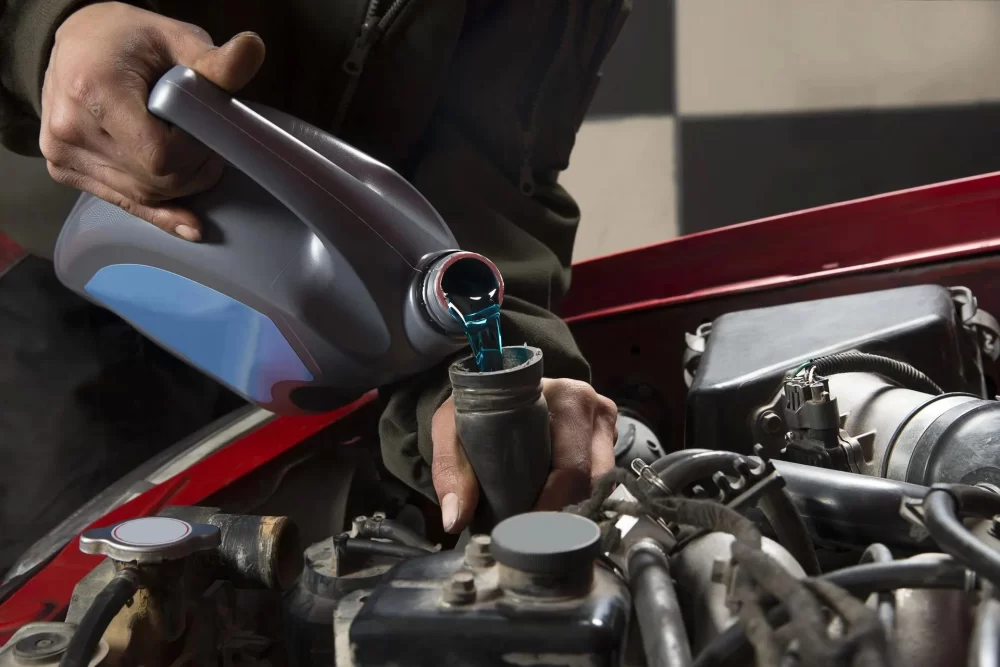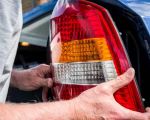Understanding and Solving Engine Overheating Issues
If you've ever been driving down the highway and noticed your car's temperature gauge creeping into the "danger zone," you know just how stressful engine overheating can be. A few years ago, I found myself in the middle of a road trip when my car's engine started overheating. It was a hot summer day, and I was miles away from any service stations. My heart sank as I thought about the potential costs and hassle involved with a breakdown. But luckily, I managed to solve the issue quickly, and since then, I've learned a lot about what causes engine overheating and how to prevent it. In this article, I'll share what I've learned about how to solve engine overheating and avoid it in the future.

Walter's Auto Repair
5508 Atlantic Ave, Long Beach, CA 90805, USA
1. Common Causes of Engine Overheating
Understanding why an engine overheats is the first step toward solving the problem. Overheating can happen for many reasons, and it’s important to identify the underlying cause before you attempt any fixes. Here are some common culprits:

Nava Auto Repair
38950 30th St E C, Palmdale, CA 93550, USA
1. Low Coolant Levels
One of the most common reasons for engine overheating is simply having low coolant levels. Coolant, also known as antifreeze, circulates through the engine to regulate its temperature. If there’s not enough coolant in the system, the engine can’t cool down properly, leading to overheating. This was the issue I encountered on that road trip; I had forgotten to check my coolant levels before leaving.
2. Broken Thermostat
The thermostat in your car regulates the flow of coolant to maintain the engine at the proper operating temperature. If the thermostat becomes stuck in the closed position, it can block coolant from flowing into the engine, causing it to overheat. I once had a thermostat malfunction in my previous car, and it caused an immediate spike in temperature. Fortunately, it was a simple fix once I identified the problem.
3. Faulty Radiator Fan
The radiator fan helps cool the engine by blowing air through the radiator. If the fan isn’t working properly, it can’t cool the engine, leading to overheating. Over time, fans can wear out, or the electrical connections can fail. I’ve had a radiator fan failure before, and it left me stranded on the side of the road until I could get it replaced.
4. Leaking Coolant Hoses
Another cause of engine overheating is leaking coolant hoses. If the hoses that carry coolant to and from the engine have cracks or holes, coolant can leak out, preventing the system from functioning correctly. I remember once noticing a small puddle of coolant under my car. It was a minor leak, but it led to significant temperature issues when I continued driving without addressing it.
5. Water Pump Problems
The water pump is responsible for circulating coolant throughout the engine. If the pump fails, coolant won’t flow properly, causing the engine to overheat. A failing water pump can be tricky to diagnose because it doesn’t always present obvious symptoms, but when it happens, it’s important to address it immediately to avoid serious engine damage.
2. How to Fix Engine Overheating
If you find yourself dealing with an overheating engine, the first thing to do is stay calm. While it’s easy to panic, there are several steps you can take to cool down your engine and prevent further damage. Here’s a step-by-step guide based on my own experience:
1. Pull Over Safely
The moment you notice your engine overheating, pull over to a safe location. Continuing to drive can cause irreversible damage to your engine. I learned this lesson the hard way when I ignored the temperature gauge on a previous trip and ended up with a blown head gasket. Pulling over as soon as you notice the signs of overheating can save you a lot of stress and money down the line.
2. Turn Off the Air Conditioning
When your engine is overheating, turning off the air conditioning can help reduce the strain on the engine. The air conditioning system adds extra load to the engine, so turning it off can help cool things down. You can also turn the heat on to its highest setting to allow the cooling system to work more efficiently. While this may make the car interior uncomfortable, it can help your engine stay cooler for longer.
3. Check the Coolant Levels
Once you’ve safely stopped, the next step is to check your coolant levels. If your coolant is low, you may need to add more to the system. Be careful not to open the radiator cap immediately after the engine has overheated, as the coolant system will be under pressure. Wait for the engine to cool before doing so. I once used a bottle of water to top off the coolant when I didn’t have antifreeze on hand, but it’s always better to use the correct coolant for your car.
4. Look for Leaks or Visible Damage
Once you’ve checked the coolant levels, it’s a good idea to inspect the engine area for any visible leaks. Look for puddles of coolant under the car or signs of wet hoses. If you notice anything unusual, you might have a leak that’s causing the engine to overheat. In my experience, even a small leak can quickly escalate into a bigger problem, so don’t ignore it.
5. Call for Towing or Roadside Assistance
If you’re unable to resolve the issue on your own, it’s time to call for professional help. Towing services and roadside assistance are valuable resources when your engine is overheating. I once had to call a towing service when my car’s thermostat failed, and I couldn’t fix it myself. A reliable towing company can take your car to a mechanic, where the issue can be properly diagnosed and repaired.
3. How to Prevent Engine Overheating
After experiencing an engine overheating situation, I’ve made a habit of performing regular maintenance checks to ensure my vehicle runs smoothly. Preventing overheating is much easier than dealing with the aftermath. Here are a few simple steps to keep your engine from overheating:
1. Regularly Check Your Coolant Levels
Make it a point to check your coolant levels every few months. Low coolant is one of the most common reasons for overheating, and topping it off can save you from major engine trouble. I usually do this during oil changes or when I get my car inspected.
2. Replace the Thermostat Periodically
Thermostats aren’t designed to last forever, so it’s wise to replace them every few years to avoid the risk of malfunction. I had to replace mine once when I started noticing irregular temperature readings. A working thermostat is essential for maintaining the right engine temperature.
3. Keep Your Radiator Clean
The radiator works hard to keep your engine cool, so it’s important to keep it clean and clear of debris. I clean my car’s radiator every few months, especially if I’ve been driving in dusty or dirty conditions. A clogged radiator can prevent proper airflow, leading to overheating.
4. Don’t Ignore Warning Lights
Modern vehicles are equipped with warning lights that can alert you to potential overheating issues before they become serious. I’ve learned to take these warnings seriously. If your car’s temperature gauge is in the red zone, don’t wait—pull over immediately and address the issue.
In conclusion, engine overheating can be a serious issue, but with a bit of knowledge and preparation, it’s possible to handle it effectively. Regular maintenance, quick action, and knowing when to call for help can save you from a lot of frustration and costly repairs. If you find yourself in need of assistance during an overheating emergency, don't hesitate to contact a trusted towing service. Visit Rescue & Towing for recommendations on the best towing companies and emergency services near you.





























